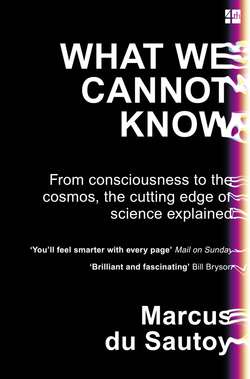Читать книгу What We Cannot Know: Explorations at the Edge of Knowledge - Marcus Sautoy du - Страница 15
FINDING THE NUMBERS IN THE DICE
ОглавлениеI’ve put another two dice next to my beautiful Las Vegas dice. So here’s a question: if I throw all three dice, is it better to bet on a score of 9 or a score of 10 coming up? Prior to the sixteenth century there were no tools available to answer such a question. And yet anyone who had played for long enough would know that if I was throwing only two dice then it would be wise to bet on 9 rather than 10. After all, experience would tell you before too long that on average you get 9 a third more often than you get 10. But with three dice it is harder to get a feel for which way to bet, because 9 and 10 seem to occur equally often. But is that really true?
It was in Italy at the beginning of the sixteenth century that an inveterate gambler by the name of Girolamo Cardano first realized that there are patterns that can be exploited in the throw of a dice. They weren’t patterns that could be used on an individual throw. Rather, they emerged over the long run, patterns that a gambler like Cardano, who spent many hours throwing dice, could use to his advantage. So addicted was he to the pursuit of predicting the unknowable that on one occasion he even sold his wife’s possessions to raise the funds for the table stakes.
Cardano had the clever idea of counting how many different futures the dice could have. If I throw two dice, there are 36 different futures. They are depicted in the following diagram.
Only in three of them is the total 10, while four give you a score of 9. So Cardano reasoned that, in the case of two dice being thrown, it makes sense to bet on 9 rather than 10. It did not help in any individual game, but in the long run it meant that Cardano, if he stuck to his maths, would come out on top. Unfortunately, while a disciplined mathematician, he wasn’t very disciplined when it came to his gambling. He managed to lose all the inheritance from his father and would get into knife fights with his opponents when the dice went against him.
He was nevertheless determined to get one prophecy correct. He had apparently predicted the date of his death: 21 September 1576. To make sure he got this bet right he took matters into his own hands. He committed suicide when the date finally struck. As much as I crave knowledge, I think this is going a little far. Indeed, the idea of knowing the date of your death is something that most would prefer to opt out of. But Cardano was determined to win, even when he was dicing with Death.
Before taking his life, he wrote what many regard as the first book that made inroads into predicting the behaviour of the dice as it rolls across the table. Although written around 1564, Liber de Ludo Aleae didn’t see the light of day until it was eventually published in 1663.
It was in fact the great Italian physicist Galileo Galilei who applied the same analysis that Cardano had described to decide whether to bet on a score of 9 or 10 when three dice are thrown. He reasoned that there are 6 × 6 × 6 = 216 different futures the dice could take. Of these, 25 gave you a 9 while 27 gave you a 10. Not a big difference, and one that would be difficult to pick up from empirical data, but large enough that betting on 10 should give you an edge in the long run.
